by Amma Marfo
“#NACA13 the awkward moment when bubba sparks [sic] was here the entire weekend and people just now noticed it”
“I’m at a wake…no wait im [sic] at block booking. Can we use 5 hour energy instead of paddles?#NACA13”
“Go home#NACA13, you’re drunk”
The snippets above are excerpts from a backchannel, or a collection of messages arranged topically, of thousands of Tweets sent during the 2013 National Association for Campus Activities Conference in Nashville, TN. NACA is a professional organization for student activities; its conferences target higher education professionals and professional vendors, and is heavily attended by college-aged students. A concern voiced in the latter half of the conference was the disturbingly frequent use of the backchannel as a means to demean performers, conduct inappropriate or irrelevant discussions, and belittle individual attendees. My colleague Christopher Conzen of Suffolk County Community College (NY) and I tasked ourselves with the composition of an article for the governing body’s magazine, designed to drive home a simple point: conscientious behavior on a backchannel, particularly for the backchannel of a conference, is a matter of GoodWork. The piece will appear in the Campus Activities Programming magazine this fall. In this essay, I report how the GoodWork tenets of Mission and the Mirror Test (Personal and Professional versions) create a means for students to be more aware of the effects of their backchannel messages on themselves and others and to act more conscientiously when authoring backchannel messages.
Let me first unpack explain the term “backchannel”. At conferences, a backchannel can be collected from social media platforms such as Facebook, Twitter, or even Instagram, and used by those at the conference to keep in touch with attendees and follow up on questions from presentations. The backchannel can also serve as a record of conference proceedings, for those unable to attend but wishing to follow along from home. With all that said, the integrity of a backchannel is necessarily tied to its proper use. Improper or impolite use of a backchannel may mean that the information shared loses credibility, as do those who share it.
I found that the GoodWork Project provides a framework that has proved useful for helping students (and to a certain extent, professionals) attending the conference to understand the many lenses through which their 140 character messages might be viewed. By recommending impressions of the Mission and Mirror Test tenets to emphasize the importance of excellence, ethics, and engagement, we simplified a conversation that otherwise is fraught with “what if’s, “what abuts, and a multitude of qualifying questions. Here’s how we found these tenets to be applicable to promoting more responsible engagement with the backchannel.
(1) Mission
As professional members and occasional volunteers for the National Association for Campus Activities, Chris and I are aware of the mission of the organization. However, it was quickly apparent over the course of the conference that student delegates, as well as less involved professionals, might not be. The mission is as follows:
The National Association for Campus Activities™ (NACA) advances campus activities in higher education through a business and learning partnership, creating educational and business opportunities for its school and professional members.
The operative term, when considering backchannel etiquette, is “creating educational and business opportunities”. Messages rife with crudeness and designed to demean individuals contribute little to that goal. As such, we encourage advisors to caution students that statements of this nature not only compromise the spirit of the organization, but are a clear sign of disengagement from the learning opportunity at hand. Additionally, viewers may soon question the credibility of the message’s author. To keep mission in mind, we posited, is to ensure that any messages sent identifying the organization are consistent with its key goals.
(2) Mirror Test, Personal Version
For many students, NACA is one of few opportunities to meet fellow students around the country that program for their campuses. Connections are made and networking occurs. Students ask their new connections to “friend” or “follow” them and these brief messages form the basis of new relationships. In what manner do these messages serve to mirror? That is to say, are the messages they send reflecting their true personalities? Or are Tweets, Instagram pictures, and Facebook posts with the conference tag creating “funhouse” versions of these students, versions that are not consistent with whom they believe themselves to be?
More and more, we are seeing that our students (and again, some professionals are still learning too!) aren’t fully aware of how they appear to others via their social media presence. I’ve tried to use the GoodWork tenets to help student affairs professionals guide students toward a more authentic expression of their daily lives. So many colleagues and friends I’ve spoken with about social media have become disillusioned with the negativity it seems to breed. Messages that darkened the feed of the NACA conference seemed to be fueled by an underlying current of negativity. This perceived pessimism can affect how competent, engaged, or ethical people appear. Instead I urge contemplation and redirection of frustration to balance perspectives shared online. But above all, we encourage those who work with students to invite the questions “When they read your tweets or Facebook posts about the event, what kind of person will they see in those messages? And does that image match the person you are the other 360 days of the year, when you’re not at an NACA event?”
(3) Mirror Test, Professional Version
Working in campus activities, or in any leadership role on a college campus, can inform one’s professional endeavors, both in skills learned and career paths taken. And although it has become cliché to call students’ attention to the “electronic trail” they’re leaving for potential employers to follow, we reminded students that posts can be seen by anyone viewing the conference tag. What’s more, those who wish to work in student affairs could be unexpectedly highlighting these posts, ensuring potential supervisors see them. Additionally, we widened that scope to include fellow students who could be selecting them for student leadership positions. In the absence of an understanding of NACA and what the organization does, posts could be seen as cruel, unprofessional, and off-putting, thus hindering their chances for selection.
So with these points all addressed, how should those who are stewards of GoodWork try to instill those principles in students?
● Act when you see something questionable. Be it reaching out online, or using social media platforms as conduits to facilitate a face to face conversation, feel empowered to “call out” bad behavior and start a conversation about it.
● Respond to concerns or complaints voiced. Often messages of frustration or even seeming indifference are a veiled request to be heard. Once you act, be open to helping the disgruntled party solve a problem. Your response could engender good will and help change his or her mindset about the organization.
● Model how you want those around you to behave. There is a Chinese proverb, “Hearing something five hundred times is not as good as seeing it once.” To garner proper behavior from students and colleagues, you must show them what you believe excellent, ethical, and engaged dialogue looks like. Set an authentic standard. Chances are, they will follow suit.
Have you seen problems with backchannel use in your students or colleagues? How was it resolved? What methods worked for you?


